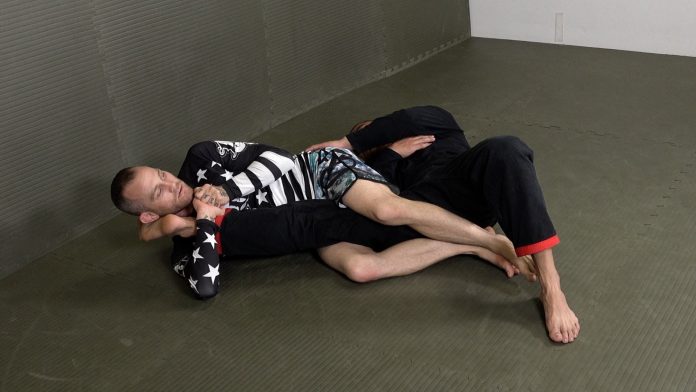
Leg locks are now as much a part of BJJ as saying “Oss” without any apparent reason is. While this means that BJJ has clearly evolved, it also brings about a new problem. That problem is sloppiness. The effectiveness of leg locks for the early pioneers of the Danaher Death Squad is now legendary, however, if you watch any grappling event that allows heel hooks and the like, you’ll notice that grapplers that do manage to execute leg locks are few and far in between. So why don’t the same positions that made the DDS notorious work just as good for everyone? After all, their secrets are now out via numerous instructionals by all of the members. The secret is drilling like a maniac, Still, you can’t just drill leg locks like you do guard passes. This is where flowing leg lock BJJ drills enter the frame.
We all know that we love to hate on BJJ drills. Everything that has a strict and repetitive structure, tends to drive most people away. Jiu-Jitsu drills fit that description perfectly. Yet, the age-old BJJ cliche “drill to win” is even more important in today’s modern grappling game. There are so many techniques, concepts, principles, systems, and whatnot, that without constant repetition, there’s no success or progress. With leg locks, which are quite new to most, drilling becomes even more important. The good news is that you don’t need to go for countless reps of any particular leg lock in order to get better. All you need to do is flow.
The Secret To Grappling Success
While the secret to becoming a high-level grappler everyone fears is in BJJ drills, leg lock superiority is in very SPECIFIC Jiu-Jitsu drills. Yes, you may approach leg locks by drilling the usual way, but that means taking a much longer path.
Usual BJJ drills include you working with a partner for reps or time. The partner usually stays still or provides very little resistance. The goal here is to fine-tune technique so much that it becomes second nature. This is a proven method that all martial arts employ. In grappling terms, drilling like this does have its benefits. Whenever you need to work on specific movements or transitions, there’s no better way to do it. A good example area passes sweeps or guard-to-guard transitions. It may be boring, but it is effective and certainly necessary.
Leg locks, on the other hand, are a bit more difficult to perfect that way. Correct positioning makes or breaks any leg lock attempts. Furthermore, due to the positioning, your legs may end up in danger much more easily compared to other submission holds. So drilling with reps is not going to cut it. Instead, you need to drill with scenarios. These include you entering a leg lock position, stabilizing it, blocking defense attempts by your partner, and ultimately finishing. Another possible outcome is to transition into another position and keep going until you finish. Adding escapes in these flowing leg lock BJJ drills is mandatory as well, both for knowing how to get out and how to prevent someone from escaping. Plus, they’re fun as hell!
Flowing Leg Lock BJJ Drill #1
We start with a very simple example. This drill is somewhat stationary compared to the others we’ll cover today. the goal here is to perfect your braking mechanics first and foremost. Next, you get to practice submission prevention. Finally, there’s a way out that leads into a leg lock attack of your own. This drill acts as a “loop flow”, meaning you can do it infinitely without ever leaving the positions. Simple sub and escape drill.
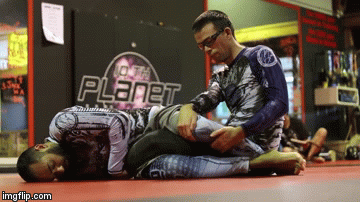

Flowing Leg Lock BJJ Drill #2
This drill is an entry drill, taking you into the best leg locking position you can be in – the Honeyhole, or 411. Once there you get to practice quite a lot of available submissions. The drill has you entering from the bottom which makes it that much more valuable for practical application in rolling and/or competition.
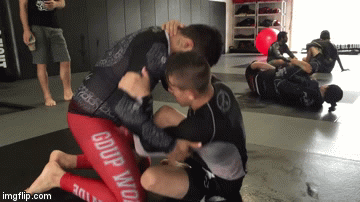
Flowing Leg Lock BJJ Drill #3
For those of you that feel advanced enough to go deep into the world of leg locks, this is the flow to try. his leg lock BJJ flow has immense transitional value as it covers pretty much all the leg locking positions and submissions. Well, all high percentage ones, anyway.
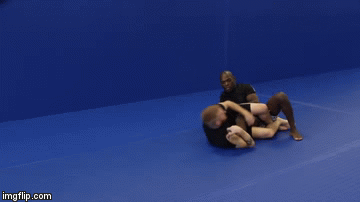
If you ask me, mastering this particular leg lock flow is going to make you incredible at finishing from just about any leg locking opportunity you find yourself into.
Flowing Leg Lock BJJ Drill #4
Our final flow leg lock BJJ drill example focuses on the art of escaping Ashi Garami. This drill is an entry and escapes flow that has one person training an entry, and the other an early escape. Note that contrary to the first flow we went over, this time you escape the position rather than defend the leg lock itself.
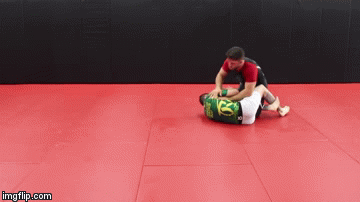
The above drills are just some examples of how you can organize your flowing leg lock BJJ drills. The sky is the limit here, as you want to make sure you cover all positions that you intend to use. Furthermore, make sure you cover as many submissions as an escape from every position as you can too. Finally, do a careful selection of the entries, as they’re arguably the most important part of this type of drill.


![Darce Choke Encyclopedia – Origins, Mechanics and Variations [2024] BJJ, choke, Brabo, BJJ Darce Choke, D'arce Choke, Darce BJJ Choke](https://bjj-world.com/wp-content/uploads/2017/11/JungPoirierLeeYahoo-218x150.jpg)








![Basic Closed Guard Jasmine Rocha DVD Review [2024] Basic Closed Guard Jasmine Rocha DVD Review](https://bjj-world.com/wp-content/uploads/2024/11/basic-closed-guard-jasmine-rocha-dvd-review-218x150.png)
![Don’t Stand Up Chris Wojcik DVD Review [2024] Don't Stand Up Chris Wojcik DVD Review](https://bjj-world.com/wp-content/uploads/2024/11/dont-stand-up-chris-wojcik-dvd-review-218x150.png)
![EMU Guard 2.0 Benjamin Power DVD Review [2024] EMU Guard 2.0 Benjamin Power DVD Review](https://bjj-world.com/wp-content/uploads/2024/11/emu-guard-2-0-benjamin-power-dvd-review-218x150.png)
![The Whole Omoplata Enchilada Lyanne Perez DVD Review [2024] The Whole Omoplata Enchilada Lyanne Perez DVD Review](https://bjj-world.com/wp-content/uploads/2024/11/whole-omoplata-enchilada-lyanne-perez-dvd-review-218x150.png)
![No-Gi Defense Xande Ribeiro DVD Review [2024] No-Gi Defense Xande Ribeiro DVD Review](https://bjj-world.com/wp-content/uploads/2024/11/no-gi-defense-xande-ribeiro-dvd-review-218x150.png)
![Mastering Takedown Prevention Steve Mocco DVD Review [2024] Mastering Takedown Prevention Steve Mocco DVD Review](https://bjj-world.com/wp-content/uploads/2024/11/mastering-takedown-prevention-steve-mocco-dvd-review-218x150.png)


![Henry Akins Black Hole No-Gi Closed Guard DVD Review [2024] Henry Akins Black Hole No-Gi Closed Guard DVD Review](https://bjj-world.com/wp-content/uploads/2024/09/henry-akins-black-hole-no-gi-closed-guard-dvd-review-100x70.png)








![Assassin Choke Baret Yoshida DVD Review [2024] Assassin Choke Baret Yoshida DVD Review](https://bjj-world.com/wp-content/uploads/2024/10/assassin-choke-baret-yoshida-dvd-review-100x70.png)
![Trip Throw Dilemma Michael Pixley and Heath Pedigo DVD Review [2024] Trip Throw Dilemma Michael Pixley and Heath Pedigo DVD Review](https://bjj-world.com/wp-content/uploads/2024/10/trip-throw-dilemma-michael-pixley-dvd-review-100x70.png)

![Two Sides One Game Sweep and Pass Marcos Tinoco DVD Review [2024] Two Sides One Game Sweep and Pass Marcos Tinoco DVD Review](https://bjj-world.com/wp-content/uploads/2024/11/sweep-and-pass-marcos-tinoco-dvd-review-100x70.png)

![Compass Kneebar System Charles Harriott DVD Review [2024] Compass Kneebar System Charles Harriott DVD Review](https://bjj-world.com/wp-content/uploads/2024/11/compass-kneebar-system-charles-harriott-dvd-review-100x70.png)

![Giancarlo Bodoni DVD Bundle Essential Connections Full Review [2024] Giancarlo Bodoni DVD Bundle Essential Connections Full Review](https://bjj-world.com/wp-content/uploads/2024/09/giancarlo-bodoni-dvd-bundle-essential-connections-100x70.png)






![The Whole Omoplata Enchilada Lyanne Perez DVD Review [2024] The Whole Omoplata Enchilada Lyanne Perez DVD Review](https://bjj-world.com/wp-content/uploads/2024/11/whole-omoplata-enchilada-lyanne-perez-dvd-review-100x70.png)

